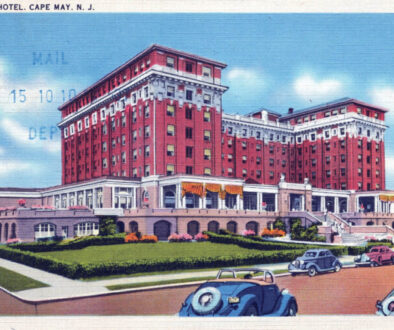The Transformation of 1069: Timing is Everything
Photographs byElaine Stevenson & Bernie Haas

This article is Part 3 of an ongoing series.
If you haven’t read Part 2, click here to do so now!
The demolition was done in late January 2020. The new general contractor hired to transform the 60-year-old LaMonica house predicted that he and his subcontractors could complete the work, inside and out, within five months, seven at the worst. Elaine Stevenson, the owner, was skeptical but guardedly optimistic.
When COVID-19 began to spread, few people could easily anticipate the extensive effects the virus would have on everyone and everything in its path. It would take time to get the whole picture. The laws of supply and demand applied not only to materials but to labor as well. Sick, infected people could not and should not work—even outside—no matter the rationale.
After the essential demolition was cleared, the restructuring of the house at 1069 Michigan began in earnest by first installing multiple engineered beams in the crawl spaces to reinforce the entire building. The positioning of the new beams was essential, but also problematic for plumbing the bathrooms later. The old lighting below the house was removed in the process, hampering all necessary work under the floors.

The garage had been where all the mechanicals—electricity, furnace, water heater—that serviced the house were placed. Soon after the garage was removed at the end of January 2020, a footing was dug for a new one; the new floor was poured later. The new garage would still be attached to the house but placed closer to the street. The second floor of the house would be enlarged to traverse the entire footprint, allowing for a large attic space above the new garage.
After meeting with Elaine in February, the builder’s crews began in earnest. Soon, however, they were stalled first by manpower issues and weather and later by a growing supply chain problem. Throughout the month the international uncertainty about COVID grew as quarantines went into effect. The conditions in Cape May were evolving, but not as limited as elsewhere in New Jersey. In the early spring, as businesses were shutting down all over the country, a sense of confusion about infections and protection against the virus had most people on edge. By then Cape May residents started wearing masks, repeatedly washing their hands, and keeping their distance from one another. Seemingly oblivious to the pandemic, however, the builder pressed on with limited protections against the virus. Still, there were many days when unexpectedly no one showed up to work.
The house had been stripped of all systems. In many respects the builder may have had a better chance of completing the project more swiftly if it had been a new house, built from the ground up. At every turn when existing walls, floors and rafters were taken apart, new problems appeared like the ghosts of unwanted visitors.
Once the framing of the new garage was in place, a steel beam was positioned side-to-side for the manufactured beams to be fastened to. Plywood sheets were nailed to the joists, creating a floor for the attic that would be built above. The way the garage tied to the main house was changed completely. The entire south wall was removed from the second floor. The previous garage had no attic; the new one stretched across the entire house to a new south wall.

A close examination revealed considerable damage to the roofing timbers in both the front and back. The roof was sagging because the original joists were fastened to each other end-to-end, joined only with small pieces of wood that overlapped the ends. Sistering in the joists that were worth saving could alleviate the sagging, but too much of the roof had to be removed. It all had to go, leaving the interior below open to the elements until new framing and sheathing could be installed. What had started as minor damage from the leaking roof became destruction as rain poured in. Very shortly, the hardwood floors that Elaine was trying to save in some of the house buckled and had to be pulled up and trashed. The marble floor in the front room absorbed so much water that it became permanently discolored.
The plans that the architect drew reflected what Elaine wanted: a large open living space, created by removing two hallways that acted as supporting walls for the upper floor. Before the house could be “buttoned up” properly, the builder had to install more steel and engineered beams. Getting the steel in place was tricky enough, but once installed, it had to be “disguised” to look natural to the room’s surroundings. Nothing was assured in this regard until the sheetrock was in place, and that would have to wait for months.
To access the second floor, the builder used the existing stairs during the demolition. At one point, he had to move them to the new position per the architect’s drawing, rotating them 90 degrees. The new design would provide more headroom at the top of the stairs and create space to frame out a hallway connecting the two bedrooms and the bathroom. The west wall was opened up so that each bedroom would have sliding glass doors to access a connecting balcony.
The “sunset balcony” as it was later dubbed was built above the back of the great room. It proved challenging to both roof design and drainage. Most of the roofing over the back of the house had to be taken off. An additional bit of roofing connecting the ridgeline to the area over the sliders had to be designed to conform to code. The drainage from the deck had to follow a complex path from the front of the deck floor through four grates and into a pipe that was built into a soffit above the wet bar in the great room. Rainwater could then continue through another pipe above the enclosed porch and out to the network of the downspouts. Unlike the disguised steel beam, the pipe was carefully hidden in a soffit above the porch room.

As April began, the framing process moved to completion. The garage was built to include a change in design, namely the addition of two large gables in the roof over the garage. By the middle of the month the entire roof was covered with plywood and sealed several days before the shingles were installed. On that day it rained for most of the afternoon as the men wielded their nail guns, hustling to beat the rain. The downpour proved to be one last wet insult to the wood below.
Weather had never been a friend to the project. The ground surrounding the building was scarred with ruts and trenches that easily filled when it rained. Without a driveway or entry surface to walk on, men tracked in mud throughout the house whenever they showed up to work inside.
Prior to finalizing the order, the representative from Andersen Windows met twice with the builder and Elaine to review each window location and design. The second meeting also determined a strategy for replacing the massive front bow window in the front of the house. In place of a single premade window which would have contained a seat, they settled on six panels fitted together and sealed.
Casement windows and pre-hung doors arrived on site in late April. A pair of glass sliding doors were placed in each of the upstairs bedrooms; two more were installed below on the first floor that opened to the back yard.
By May 1st, effectively six weeks later than planned, the house was finally buttoned up. The new replacement front doors had yet to be delivered, but it didn’t stop work on the mechanicals from starting. The subcontractors for the plumbing put in a manifold PEX (cross-linked polyethylene) system which is composed of plastic tubing (red for hot; blue for cold) that is run throughout the house in the same fashion as electric circuitry. The master manifold allows individual control over each of the fixtures in and outside the house from a central control panel.


New drains were prepared in the bathrooms and the sink areas, and then connected to the existing sewer pipe in the wall of the crawl space. Within a week, the entire water system was roughed in, ready for final fixture installation when the time came.
The electrician’s tasks were more complicated and extended over a longer period of time. The electrician originally assigned to the job had to be replaced by a part-time contractor. As a result, availability and communication failed time and again. Some materials spec’d for the job were ignored by the contractor, assuming cheaper replacements bought in bulk would be okay. They weren’t. One such misunderstanding led to redoing work with the right fittings to accommodate the specified fixtures purchased directly by the owner. Consequently, the electrical installation was delayed unnecessarily. Then the contractor ran into the problem of his men not reporting to work.
The HVAC company arrived in early May along with the replacement furnace. It was installed in the “mechanical room” on the inside of the house designed to hold the PEX control center, tankless water heater and the furnace/blower. The room was built as a large closet, on a wall inside the house to eliminate any potential damage caused by salt air in the natural climate conditions in the garage.
The day after Memorial Day, a tractor trailer carrying ten pallets of chocolate grey mosaic natural stone veneer arrived from South Carolina. Installation of the specified vinyl siding had started a week earlier. It was decided however that some of the vinyl could be replaced with stone veneer. The stone in the order was far more than needed. Although replacing the proposed area for siding with stone was more expensive, the appearance and durability were unquestionably better. (In 2022 more of the stone veneer was applied to the concrete walls of the foundation.)


The builder’s men completed the siding by the end of May. Getting a stone mason to start on the rest of the house was easy enough; getting one to complete the tasks was more difficult.
In early June, the house was insulated, from the roof rafters to the flooring above the crawl space without delays. Within days, the contractor had a truckload of sheetrock delivered to the site. Because the second floor didn’t have an access large enough to bring the materials in through a doorway, the contractor carefully cut an opening in the gable above the garage and hoisted the sheetrock vertically. Once inside, they re-sealed the opening. Crews of “rockers” got to work on a Tuesday morning and were gone by Wednesday afternoon—walls, ceilings and closets mounted and taped.
At the end of June progress just stopped. A stone mason had started on the exterior and though the builder’s men showed up to prepare woodwork for the interior, the exterior languished. Because there was no driveway or a walkway to the front door, every footstep into the house was over dirt or mud. The need for hardscape dragged on for weeks, then months.

Part of the holdup was because the pool in the backyard had to be dug, and that didn’t get started until August 10th. The hole in the backyard laid empty until September when the gunite crew arrived just before Labor Day. They poured concrete into the forms and left. The bluestone coping was finished in November, but the tile work wasn’t done until 2021.
Throughout the fall and winter of 2020, as the economy was affected by vaccinations and testing for COVID-19, work at 1069 was sporadic at best. Wood, whether for doors, moldings or structure was in short supply, making what could be obtained both more expensive and of lesser quality. And everywhere there was a palpable air of uncertainty.

As the year ended, the structure of 1069 Michigan Avenue had been reinforced, beautified and, in a word, transformed. It was more solid and, in a sense, more dignified though some exterior work remained to be done. Fencing had to be removed and a new fence installed but that couldn’t even be scheduled until after the new year.
The ground around the house was more dust and debris than soil. The driveway, walkways and patio wouldn’t be finished for another six months, the pool for almost another year. The contractor’s five-month projection for completion was wrong even for just the exterior—and the interior work had scarcely begun.
But perhaps the worst part of the sluggish transformation for Elaine was that she realized that it would likely be another spring without greenery at 1069. For a professional landscape designer that was pure
frustration. ■



